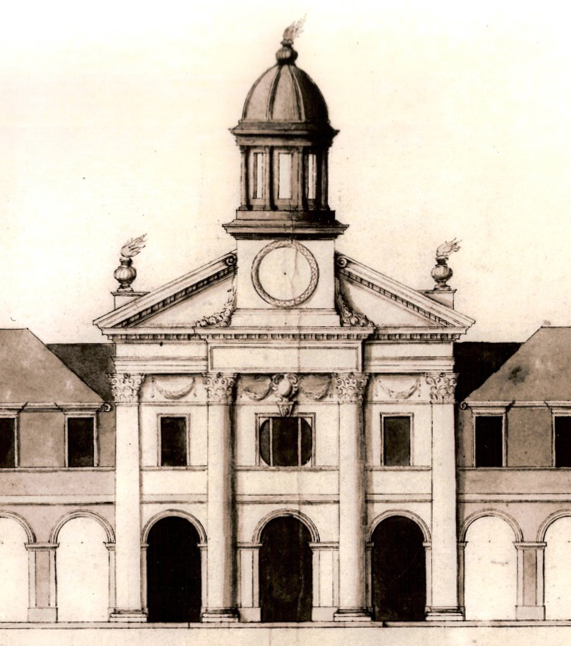The Chapel Building
The Chapel, along with the cloisters outside and the gallery above, is an early work by Sir Christopher Wren. It is the third place in the College to be used as a permanent place of worship.

This site has been a place of education and of worship since 1238, when Dominican friars made this the site of their house in Cambridge. The College Hall stands on the site of their church, a large building suitable for hearing sermons, preaching being part of the distinctive vocation of the Dominicans, who are also known as ‘The Order of Preachers’.
In 1538 under Henry VIII the Dominicans’ friary was dissolved along with all the other monasteries in England. When Sir Walter Mildmay founded Emmanuel in 1584 the buildings were in a semi-ruined state. The walls of the church were restored and a roof put on to make the Hall for the new College, and another monastic building was put to use as the Chapel. This is the room we now know as the Old Library, and it served as the Chapel until the present building was completed in 1677.
Two Masters had been buried in the Old Chapel, Laurence Chaderton, the first Master and John Breton, the eighth. On the completion of the new building both bodies were transferred to the present chapel. Chaderton is buried at the entrance to the Chapel. His gravestone records his advanced age – he was nearly 103 when he died in 1640. Breton, most of whose mastership had been taken up with the building of the new chapel is buried, without a memorial, in front of the altar step.
The moving force behind building a new chapel was William Sancroft who became Master after the restoration of Charles II in 1660. He engaged Wren and campaigned to raise the money to pay for the building, contributing generously out of his own resources. He left Emmanuel to become Dean of St Paul’s after only two years, but retained a keen interest in the project.
Fifty years after the Chapel was completed, two fellow-commoners added significantly to its furnishings. In 1732 Edward Hulse gave the chandelier, one of the earliest English glass chandeliers. In 1734 Christopher Nevile gave the picture of the return of the prodigal son by the Venetian painter Giacomo Amigoni.
Originally the glass in the windows would have been plain. The current windows were added as part of a programme of restoration to mark the College’s tercentenary in 1884. You can find out more about the windows and the people depicted in them in other sections.
